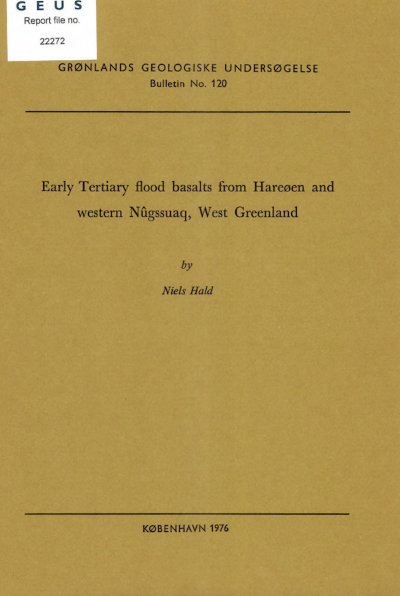Early Tertiary flood basalts from Hareøen and western Nûgssuaq, West Greenland
DOI:
https://doi.org/10.34194/bullggu.v120.6662Abstract
In central West Greenland flood basalts were erupted in the Early Tertiary. On Hareøen and western Nûgssuaq the upper part of the volcanic sequence predominates reaching a thickness of more than 3 km. In these two areas tholeiitic, olivine porphyritic basalts and picritic basalts are followed by tholeiitic basalts with plagioclase as the dominant phenocryst. The content of incompatible elements in the plagioclase porphyritic basalts is low in the early stages, as is the case in most of the older olivine porphyritic lavas in the province; however, after a pause in the volcanic activity, the concentration of these elements is increased by a factor of 3-6. A few thin layers of peralkaline, rhyolitic tuffs are found in the upper part of the plagioclase porphyritic sequence. The tholeiitic lavas are intruded by dykes. Most of these are petrographically the equivalent of the extrusive rocks, but dykes of transitional olivine basalts are presumed to represent a younger magmatic episode from which no lavas are known. The youngest igneous rocks in the area – and perhaps the youngest lavas in all of the West Greenland basalt province – are olivine porphyritic, alumina enriched transitional basalts deposited unconformably on the tholeiitic sequence on Hareøen. Forty-three new chemical analyses of the magmatic rocks are presented as well as micro-probe data on phenocryst and groundmass phases. The diversity of basaltic rocks cannot be explained by low pressure crystal fractionation alone, and it is suggested that the chemical evolution of the lavas and dyke rocks reflect chemical variations in batches of olivine rich magmas injected into the crust from the mantle.
Downloads
Published
Issue
Section
License
This article is distributed under a CC-BY 4.0 licence, permitting free redistribution and reproduction for any purpose, even commercial, provided proper citation of the original work. Author(s) retain copyright over the article contents.


